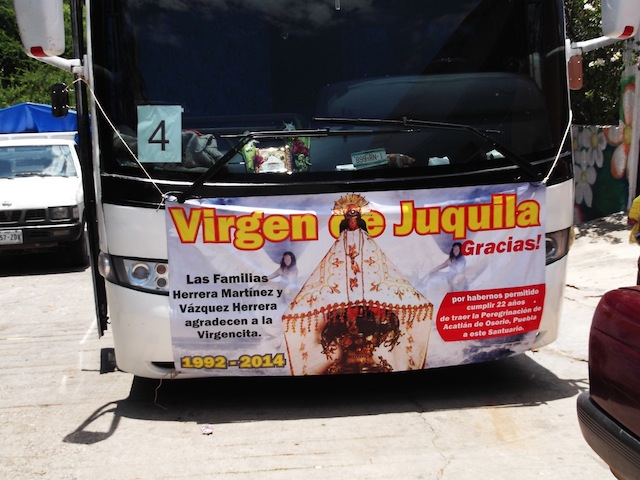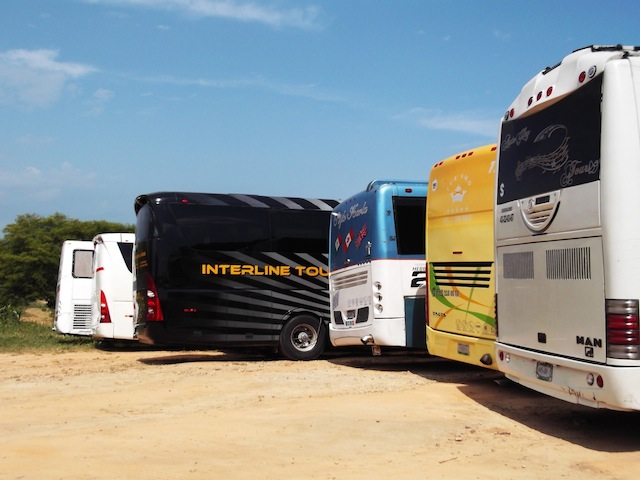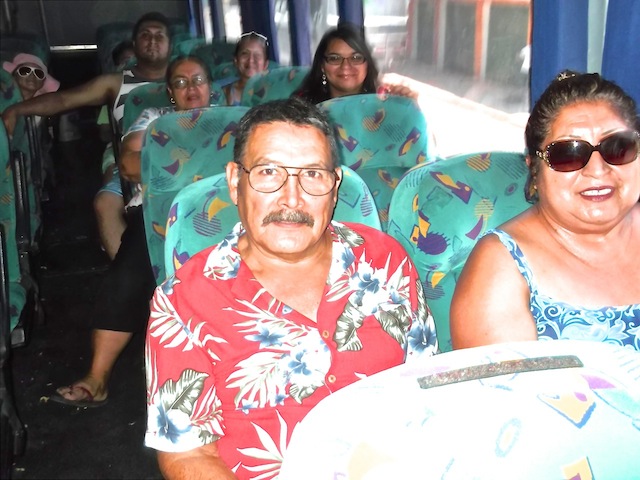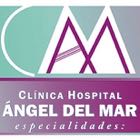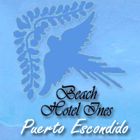The Pilgrims’ Route from Juquila to Puerto
Devotees have been traveling to Juquila on foot for hundreds of years, but the pilgrimage to the shrine of the Virgin of the Immaculate Conception seems to have gained popularity in the 1950s. One long-time Puerto resident and native of Oaxaca relates how in 1952, at the age of 20, he set off on December 3 with a group of friends to make the trip.
The old man’s face lights up as he remembers those happy days of walking with thousands of other, mostly young, people from Zimatlán to Juquila. “It was pure foot paths”, he said, and to cross the Juchatengo River you paid 20 centavos to rent a horse or to go by canoe. As they walked, the pilgrims sang songs to the Virgin. They carried their provisions and bedding with them, but villagers would also offer them food and water and a place to sleep.
The journey took four days. The first stop was in Ayoquezco de Aldama; the second night was in Sola de Vega, the third in Juchatengo and the fourth in El Pedimento. The pilgrims would arrive in Juquila at dawn on December 7.
Before the completion of Federal highway 131 as a dirt road (it wasn’t paved until 1997) which connects Oaxaca with Sola de Vega and Puerto Escondido, most transport of people and goods was by burro over narrow, mountain paths. Coffee from the mountains arrived in Nopala by burro and then was carried by truck on a onelane dirt road (the old Camino Real) to San Pedro and Chila en route to Puerto for shipping. (A small airport opened in San Pedro in 1937 with passenger flights to Oaxaca.) There was no road between Ju quila and El Vidrio on 131 until 1966. But by 1970, buses, cars, and colectivos were bringing pilgrims from Juquila to Puerto laying the foundation of tourism to our town.
The first visitors to Puerto found accommodations in private houses, some of which became hotels. Then, as some still do, they would have brought their food with them, but soon they were also eating in Puerto’s first restaurants. Even now, according to the State and Municipal tourism authorities, the greater part of visitors to Puerto arrive from Juquila.
Today, the pilgrims to Juquila mainly come by chartered bus from Oaxaca, Puebla, Tlaxcala, Hidalgo, the State of México, Guerrero, and Mexico City. Typically, the excursion organizer is someone from the community whose only benefit is a free trip. Her neighbors set aside money each week or month, and the organizer charters the bus. Or it might be the bus owner who organizes the trip. In the case of the shoe shiners of Oaxaca, the union arranges the trip with the workers cont ributing every week.
The groups usually spend one or two nights in Puerto and then may go on to Huatulco. (In recent years a number of economical hotels have sprung up there.) According to the Federal government’s DataTur figures, Puerto received 243,723 over night visitors in 2012, but DataTur also reports that city only has 2,072 hotel rooms. The reality is that most visitors do not stay in registered accommodations. When a bus pulls up in front of a hotel, people with rooms to rent or even “hidden” hotels will come forth to bargain with the group’s organizer. If you aren’t fussy about things like clean sheets, you can get a room for four for as little as 150 pesos a night. And if that’s too much you can always sleep on, or next to, the bus.
On the other end of the scale, there are family groups who come in buses from as far away as Nuevo León and Zacatecas and stay at luxury hotels like the Villa Sol and the Santa Fe. Their trips are arranged through travel agencies specializing in bus tours. The driver for a group coming from Zacatecas reported that his passengers, who were staying two nights at the Santa Fe before heading to Huatulco for two nights, were a family that travelled to a different part of Mexico every year. The drive was 30 hours, non-stop, via San Luis Obispo and Puebla. The poor guy was still recovering from the shock of driving over the mountains from Oaxaca to Puerto. “So many curves”, he observed.
The high points of most bus tourists’ experience in Puerto are a day at the beach at Puerto Angelito and a night on the Adoquín. One day in July there were around 20 buses parked in Puerto Angelito.

